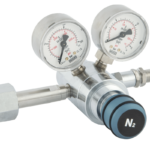We all want to see our website on the first page of search results for a given search term. After all, you want your efforts and efforts to translate into positive results, such as increased traffic and other leads. Think of content on topics or ideas that no one is looking for. There’s no point in putting a lot of effort into something that won’t get the traffic you want from the search engines, no matter how well you write it or how hard you try to promote it.
In order to increase their visibility online, brands have started to focus on improving their websites continuously as Google algorithms are constantly updated. One thing that has changed over time is topic analysis. Professional content writers and SEO experts are always in a race to rank high in organic search results for keywords.
As mentioned earlier, when it comes to getting a good ranking in search results, brands focus on search engine optimization (SEO). Keywords are the foundation of SEO. Therefore, right keyword research is one of the most important SEO tasks. Note that keyword research is about finding the right keywords and positioning them correctly.
In addition, we discussed the basics of keyword research that you need to know in order to organize your article. When you focus on the above points and your goals, your blog will easily grow and improve in the search results.
What is the main issue?
Keywords are words or phrases that users type into a search engine to find relevant information online. Keywords are often called search engine optimization or SEO keywords.
In technical terms, a right keyword is a gateway where people are directed to organic search results and to a website where they can find the answer. So, through keyword research, you can understand what people are looking for and optimize your website for better rankings.
How to do keyword research for your article?
Subject research can prove to be a long and complex process. Let’s dive into how to do right keyword research. Big companies like the international B2B marketplace never miss any of these steps to reach the target audience easily. Follow the steps below to customize your articles to meet your SEO goals.
1. Know your niche topic
To optimize your page with the best keywords, you must first know more about your topic or niche. This step helps you to think about areas that you have not thought about before. It also ensures that your news content is relevant to your company, product/service and audience.
2. Determine your goals
As Stephen Covey said, “Begin with the end in mind.” Whenever you start a new journey, it is very important to know your end goal. To find out you will need to know the answers to some questions, such as what is your brand, who is your audience, what is your USP, etc.
Once you have identified all the answers, you can design your brand’s mission statement. It could be to increase traffic to your website or get more subscribers etc. Having a goal in mind helps set the direction for all your plans and initiatives. The goals you set will also help with the goal of creating your content in the right format and direction.
3. Create a list of topics
Once you start your research, you must collect and organize these ideas. Charting your options will help you organize and identify key data options. This may seem like a passive step, but it’s important to be organized when you’re linking for hundreds of keywords.
Based on your niche and goals, identify keywords that are important to your brand and divide them into smaller keyword buckets. These topics are important to your brand and its audience. The keyword bucket can be broken down into related keywords.
The list of topics will end up being useful for you too. You can use online keyword research tools like Google’s Keyword Planner to build a strong foundation for your research. Knowing and tracking your keywords will help you develop and implement successful strategies. For instance, Chinese B2B platform have to choose topics that are relevant to their business and clients. This includes anything like manufacturer, suppliers, etc.
4. Check the search target
As mentioned earlier, just getting a lot of keywords will not help you rank your page faster. With changes in Google’s algorithm, the search engine compares your keywords to user queries to understand intent.
Search intent is the main reason people search for a word. You must identify the factors that influence the search behavior of your audience. Put yourself in their shoes to find out the purpose of their question.
Once you know if they are looking for a specific item or a solution to a problem, you will have a broad idea of what to do with keyword research. In addition to finding more keywords, your focus should also be on matching keywords with the search intent of your target audience.
5. Find the balance of long-tail keywords and seed
Keywords are short search terms related to your niche or brand. Whereas, long tail keywords relate to your brand’s theme and are more descriptive.
A good SEO plan always focuses on topics of varying length and detail. Keyword combinations and long-tail keywords are critical.
You’re more likely to fall into the minds of users searching for long-tail keywords. Therefore, it is easier to use long-tail keywords to reach important audiences than to use seed keywords. In terms of clicks, long tail keywords rank lower than seed keywords because they are usually brand, product or topic specific. However, they usually have a high conversion rate.
6. Keep an eye on your competitors
When you’re talking about getting your article to rank higher, you have to look at your competitors first. Determine the keywords they use to get a higher ranking. This will save you the time and effort of starting from scratch.
Do competitor research using online SEO tools like SEMrush. See which keywords they are ranking for, and how much competition each keyword has. Look for keywords from them that you think can take advantage of others and get higher rankings. Leave the keywords that are hard to rank for, and find the ones where you see the difference.
7. Review the right keywords
Now that you’ve collected all the possible keywords, it’s time to analyze them. You can use a variety of metrics to determine which keywords are performing best for you. Use metrics like search volume, competition, and more to determine the value of your keywords.
The right keyword will have high search volume and low competition levels. The idea is to make data-driven decisions to get your content to rank better.










